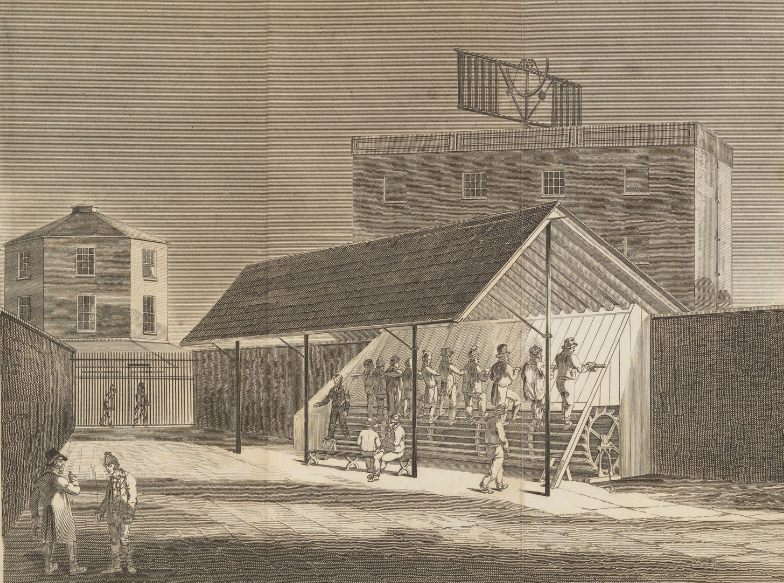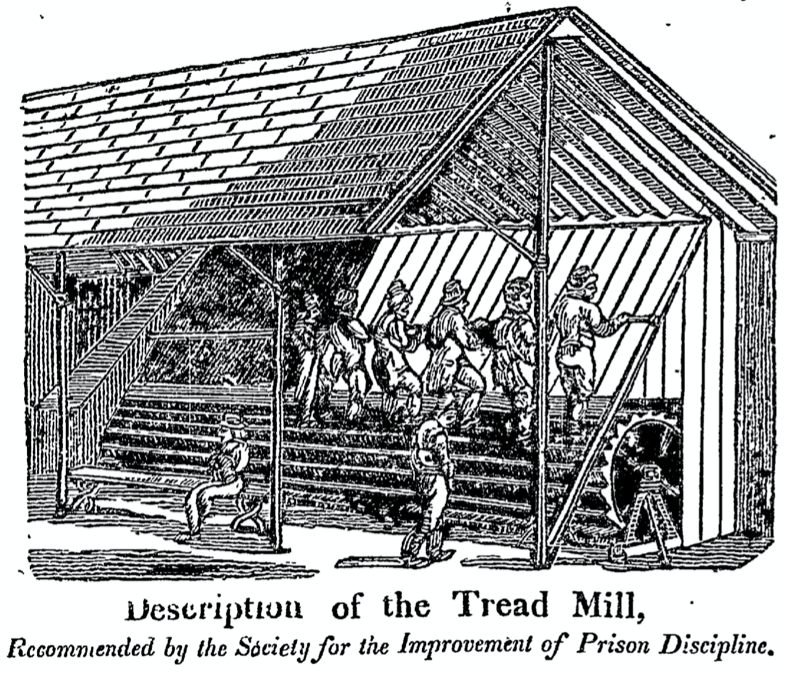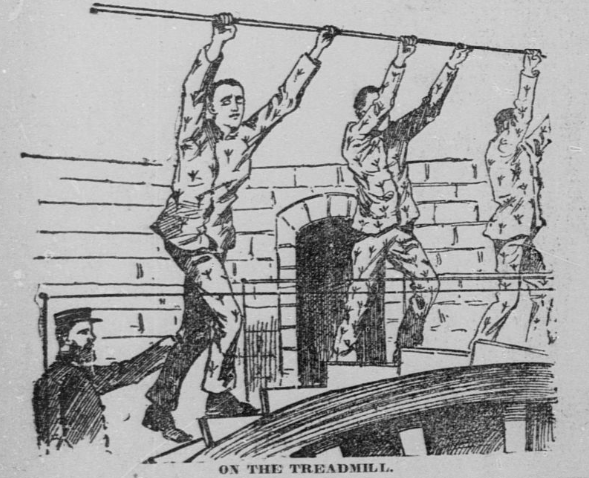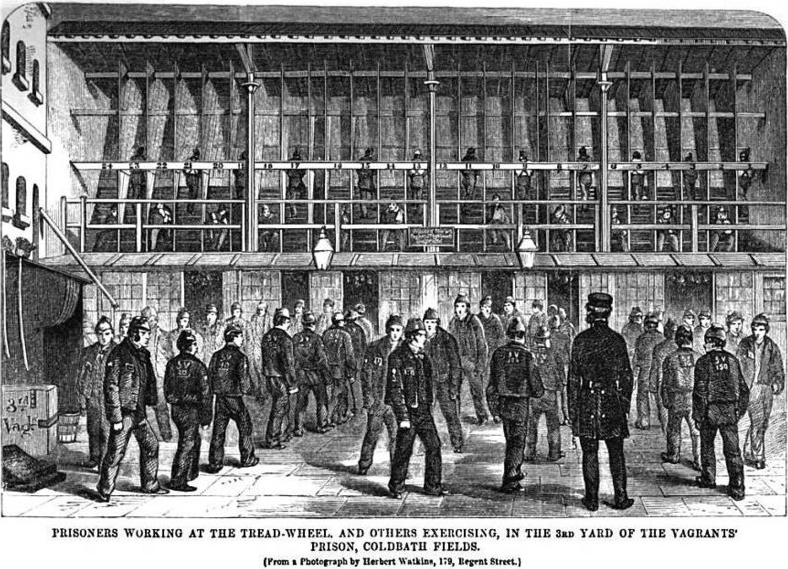
People spend good money to buy a decent treadmill, but little do they know that the treadmill has a dark history in the prisons of England.
The treadmill, originally invented by the Chinese, was introduced into the English penal system in 1818 by William Cubitt. [Source]

Its purpose was to discipline the prisoners, prepare men for industrial life, and to torture the men by making them “work” without any sense of accomplishment.
Prisoners were originally forced to walk the treadmill for nine hours a day, but that proved too difficult, so the hours were reduced to six hours a day.
The majority of the time, the treadmills powered nothing. That was part of the punishment: work without purpose.
A few times, however, the treadmill was used to do simple tasks like grind flour, draw water, and produce power.
In 1893, it was reported that:
“It appears ridiculous that at this late day most of the large prisons in England should be furnished with treadmills. However, treadmills are not utterly useless now, as was the case in olden times. Then the men who trod the mill and made it revolve made it do nothing else. It was simply a waster of flesh and a maker of muscle. The treadmill at Pentonville prison does better than this. It furnishes power for the pumping apparatus of the prison and other machinery.
“A treadmill is shaped exactly like the wheel of a stern-wheel steamer, or one wheel of a side-wheeler, except that the treadmill is wider than the latter. At a height which a man of medium height with arms extended can grasp is a wooden bar. The prisoner who is condemned to the treadmill jumps on one of the wooden floats and grasps the wooden bar with his hands. His weight turns the mill, and then when one float is getting beyond touching distance with the foot, another float comes around. It is like climbing a flight of steps that have no beginning and no end. If you miss a step you get a whack on the shin that either bruises the flesh or takes the skin off. It is probably the most disheartening work in the world, for at the end of a day there is nothing to show.” [Source]
Men on the treadmill were not allowed to speak and would get hit if they broke the silence rule. Some treadmills had partitions between the men so that they could not see each other.

If you think you could have just refused to get on the treadmill, think again. Any man who refused to walk the treadmill was placed in a dark cell and given only bread and water until he submitted to the punishment.
One of the most famous men to have ever been placed on the treadmill was Oscar Wilde.
In 1895, Wilde was sentenced to hard labor for gross indecency and was sent to the Pentonville Prison. While he was there, he was forced to walk the treadmill.
According to one newspaper account published in 1897:
“The main object of English prison treatment during the first few months is to reduce the convict to complete subjection, mentally and physically. The first four months, therefore, of Wilde’s imprisonment were devoted to constant exercise upon the treadmill during which time he was restricted to the lowest class of prison diet, consisting of three meals a day. A bowl of thin gruel with two ounces of bread was served in his cell at 8 o’clock each morning after he had scrubbed out his apartment and done two hours on the “endless staircase.” After breakfast he returned to the treadmill until noon, when a dinner of bread and beans, varied once a week by the addition of suet pudding, was served at 1 o’clock. A short turn on the treadmill then began, and was followed by a parade in the lockstep about the exercise grounds until 6 o’clock, when supper, invariably the same as breakfast, was eaten in his cell. This consumed, Wilde was ordered to make up his bed, strip himself, hand out his clothes to the turnkey, and then retire for the night.
“The bed was then a hard straw mattress rolled out on a plank with one coarse blanket, and in the winter a species of padded horse cloth to throw over the blanket. In Wilde’s case a special warden was detailed to keep him under continual observation. The warden awakened him at 6 o’clock each morning, threw him in his bundle of clothes and ordered him to dress and proceed to the treadmill.” [Source]
Wilde was freed from prison in 1897 and died two years later.
In 1895, there were 39 of these treadmills in use in England. That number dropped to 13 by 1901.

The treadmill as a form of prison punishment was abolished a year later in 1902 and the London News reported:
“The treadmill was condemned on various grounds. It is held to have been both trying to health and ineffective as a punishment. The large rooms and spaces [that were once used for] the wheel [are] at the disposal of the prison authorities [and] are being utilized as workshops….” [Source]

